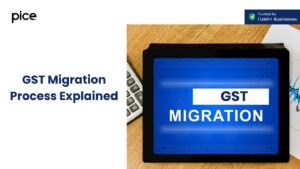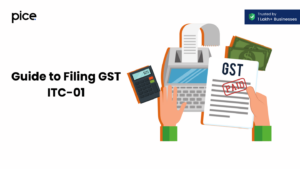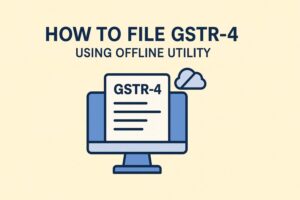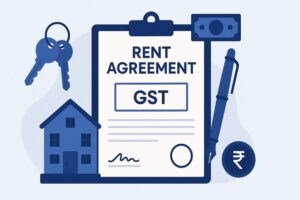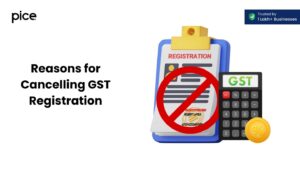Cancellation of GST Registration
- 28 Aug 24
- 15 mins

Cancellation of GST Registration
- Who Needs to File a GST Return?
- What Is the Deadline for Filing GSTR-10?
- What Details Must Be Included in the GSTR-10 Return?
- What Are the Penalties for Not Filing the GSTR-10 Return?
- Conditions Required Before Filing Form GSTR-10
- Exemptions from Filing Form GSTR-10
- Reasons for Cancelling or Surrendering GST Registration
- Procedure for Cancelling GST Registration
- Consequences of GST Registration Cancellation
- Revoking a GST Registration Cancellation
- Process to Revoke a GST Registration Cancellation
- Required Documents and Information for Revoking GST Registration Cancellation
Key Takeaways
- Ensure all GST returns are filed up to the date of cancellation to avoid penalties and compliance issues.
- File GSTR-10 within three months from the date of cancellation or the cancellation order date, whichever is later.
- Prepare and submit detailed stock records, financial statements, and tax invoices to support your GSTR-10 filing and revocation application.
- Certain categories like Input Service Distributors, non-resident taxable persons, and composition dealers are exempt from filing GSTR-10.
- Apply for revocation of GST cancellation within 30 days of the cancellation order by providing valid reasons and supporting documents.
Cancellation of GST registration is a crucial aspect for businesses undergoing restructuring or cessation of operations. It involves officially terminating the GST registration of a business, which could be due to various reasons such as closure of business, transfer of business, or other valid grounds as stipulated by the GST law.
Who Needs to File a GST Return?
GST returns are mandatory for every GST-registered taxpayer, including regular taxpayers, composition dealers, non-resident taxable persons, and input service distributors. Filing GST returns ensures compliance with tax regulations and allows businesses to claim input tax credit (ITC) on purchases. Regular taxpayers must file monthly returns (GSTR-1, GSTR-3B) and an annual return (GSTR-9). Composition dealers file quarterly returns (CMP-08) and an annual return (GSTR-4). Non-resident taxable persons file GSTR-5, and input service distributors file GSTR-6.
Late filing of GST returns can attract penalties and interest, impacting the business’s financial health. Therefore, it is crucial to file returns on time, regardless of the business activity, to avoid any tax liability issues and ensure a successful filing process on the GST portal.
What Is the Deadline for Filing GSTR-10?

GSTR-10, also known as the Final Return, must be filed by every taxpayer whose GST registration has been canceled or surrendered. The due date for filing GSTR-10 is within three months from the date of cancellation or the date of the cancellation order, whichever is later. Timely filing of GSTR-10 is essential to avoid penalties and ensure the proper closure of the business's tax records.
For instance, if the GST registration is canceled on 1st January, the GSTR-10 must be filed by 31st March. Failure to adhere to the deadline may result in penalties, making it imperative for businesses to comply with the filing timelines.
What Details Must Be Included in the GSTR-10 Return?
The GSTR-10 return requires detailed information about the inputs, capital goods, and outward supplies held in stock on the date of cancellation. The specific details to be included are:
- Details of inputs, capital goods held on the date of cancellation.
- ITC on closing stock (inputs, capital goods, and finished goods).
- Tax liability on the closing stock.
- Invoices and other supporting documents.
Accurate reporting in the GSTR-10 return ensures proper calculation of tax liabilities and helps in settling any outstanding input tax credit. This return acts as a final reconciliation of tax obligations and credits, ensuring no discrepancies remain post-cancellation.
What Are the Penalties for Not Filing the GSTR-10 Return?
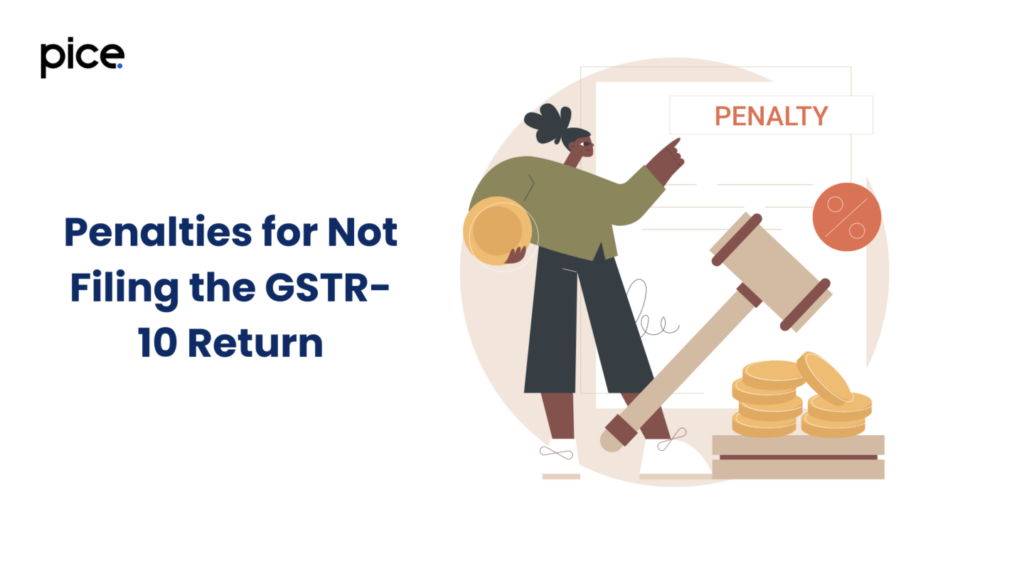
Not filing the GSTR-10 return within the stipulated time frame can result in severe penalties. Under Section 125 of the CGST Act, a general penalty of up to ₹25,000 can be imposed for non-compliance. Additionally, the tax authority may initiate proceedings to recover any outstanding tax liabilities and may even cancel the GST registration if the return is not filed promptly.
Non-compliance can also result in difficulties during the transfer or closure of business activities, as the pending return will affect the proper settlement of tax obligations. Hence, businesses must ensure timely filing of GSTR-10 to avoid these penalties and legal complications.
Conditions Required Before Filing Form GSTR-10
Filing Form GSTR-10 is a crucial step for businesses undergoing GST registration cancellation. To ensure a smooth and accurate filing process, several conditions need to be met before submitting the form. Here are the detailed prerequisites:
Ensure All GST Returns Are Filed: Before filing Form GSTR-10, businesses must ensure that all prior GST returns up to the date of cancellation are accurately filed. This includes all GSTR-1, GSTR-3B, and annual returns (GSTR-9). Filing these returns ensures that all transactions, input tax credits, and tax liabilities are correctly reported.
💡 If you want to pay your GST with Credit Card, then download Pice Business Payment App. Pice is the one stop app for all paying all your business expenses.
Reconcile Input Tax Credit and Outward Supplies: A thorough reconciliation of input tax credit (ITC) and outward supplies is necessary. Businesses should:
- Verify that the ITC claimed matches the credit ledgers and invoices.
- Ensure all outward supplies are reported and match the tax invoices issued.
- Adjust any discrepancies in ITC or outward supplies to avoid future complications.
Prepare Detailed Stock Records: Accurate stock records are essential for filing GSTR-10. These records should include:
- Details of inputs, capital goods, and finished goods held on the date of cancellation.
- Taxable supplies and the tax liability associated with the closing stock.
- Supporting documents such as purchase invoices and stock registers.
Calculate Tax Liability on Closing Stock: Businesses need to calculate the tax liability on the closing stock as of the cancellation date. This involves:
- Assessing the value of inputs, capital goods, and finished goods in stock.
- Calculating the GST payable on these goods.
- Ensuring the tax liability is correctly reflected in the Form GSTR-10.
Settle Outstanding Tax Liabilities: All outstanding tax liabilities must be cleared before filing Form GSTR-10. This includes:
- Payment of any pending taxes from previous periods.
- Settling the tax liability on closing stock using the electronic cash/credit ledger.
- Ensuring there are no dues left, as unsettled liabilities can lead to penalties and rejection of the cancellation application.
Update Business Activity and Financial Records: Businesses should update their financial records and ensure that all transactions are accurately reflected in their accounting systems. This includes:
- Recording the closure or discontinuation of business activities.
- Updating ledgers and financial statements to reflect the cancellation of registration.
- Ensuring compliance with all financial reporting standards.
Verify Electronic Liability Ledger: The electronic liability ledger on the GST portal should be checked to ensure that all tax liabilities are accounted for. Businesses should:
- Review the ledger for any pending dues.
- Make necessary payments to settle any outstanding liabilities.
- Confirm that the ledger reflects a zero balance post-settlement.
Proper Documentation and Verification: Proper documentation and verification are critical before filing GSTR-10. Businesses should:
- Gather all necessary documents, including purchase invoices, stock records, and tax invoices.
- Ensure that all information provided is accurate and complete.
- Verify the details with the help of a cost accountant or accounting firm if necessary.
Validate Digital Signature: The GSTR-10 form requires a digital signature for submission. Businesses must ensure that their digital signature is valid and registered on the GST portal. This step is crucial for the successful filing and acceptance of the return.
Compliance with GST Regulations: Businesses must comply with all GST regulations and guidelines before filing Form GSTR-10. This includes:
- Understanding the legal requirements for cancellation of registration.
- Adhering to the GST rules and procedures.
- Ensuring that the application for cancellation and the GSTR-10 filing align with the regulatory framework.
Exemptions from Filing Form GSTR-10
Form GSTR-10, also known as the Final Return, is mandatory for businesses undergoing GST registration cancellation. However, certain categories of taxpayers are exempt from filing this form. Understanding these exemptions helps streamline the compliance process for specific types of businesses and reduces the administrative burden. Here are the detailed exemptions from filing Form GSTR-10:
- Input Service Distributors (ISDs): Input Service Distributors (ISDs) are exempt from filing Form GSTR-10. ISDs distribute the input tax credit (ITC) of services received to their branches or units registered under the same PAN. Since ISDs primarily deal with the distribution of ITC and not the supply of goods or services, they are not required to file the final return upon cancellation of their GST registration. This exemption simplifies the compliance requirements for ISDs, allowing them to focus on the accurate distribution of ITC.
- Non-Resident Taxable Persons: Non-resident taxable persons, who are temporarily registered under GST for a short duration of business activities in India, are also exempt from filing GSTR-10. These individuals or entities typically operate in India for a limited period, such as during exhibitions, fairs, or specific projects. Given their temporary presence and specific nature of business activities, the GST law exempts them from the final return filing requirement, making the process less cumbersome for non-resident taxpayers.
- Taxpayers Paying TDS under Section 51: Taxpayers who are required to deduct tax at source (TDS) under Section 51 of the CGST Act are exempt from filing Form GSTR-10. This category includes government agencies and other specified persons who deduct TDS while making payments to suppliers. Since their primary obligation is to deduct and deposit TDS, rather than regular supply of goods or services, they are not required to file the final return upon cancellation of their GST registration. This exemption ensures that these entities can focus on their TDS responsibilities without additional compliance burden.
- Composition Dealers: Composition dealers, who opt for the composition scheme to simplify their GST compliance, are also exempt from filing GSTR-10. These dealers file quarterly returns (CMP-08) and an annual return (GSTR-4). Since the composition scheme is designed to ease the compliance process for small taxpayers by allowing them to pay a fixed percentage of their turnover as tax, they are not required to file the final return. This exemption aligns with the simplified compliance framework intended for composition dealers, helping them manage their tax obligations more efficiently.
- Casual Taxable Persons: Casual taxable persons, who occasionally undertake business activities in a different state where they do not have a fixed place of business, are exempt from filing GSTR-10. These persons are registered under GST for a limited period to undertake specific business transactions. Given their temporary and occasional nature of business, the GST law exempts them from filing the final return upon cancellation of their registration. This exemption helps casual taxable persons focus on their temporary business activities without the additional burden of filing the final return.
- Special Cases and Specific Exemptions: In addition to the above categories, the GST law may provide specific exemptions for certain taxpayers based on special circumstances. For instance, businesses undergoing restructuring, such as mergers or acquisitions, may be granted exemptions from filing GSTR-10 if their tax obligations are addressed through other returns or compliance measures. These specific exemptions are designed to address unique business scenarios, ensuring that taxpayers are not unduly burdened with compliance requirements that do not align with their operational realities.
Reasons for Cancelling or Surrendering GST Registration
GST registration can be canceled or surrendered for various reasons, including:
- Closure of business.
- Transfer of business due to sale, merger, or amalgamation.
- Change in business constitution leading to a new PAN.
- Discontinuation of taxable supplies.
- Voluntary cancellation for entities no longer meeting the threshold limit.
Understanding the valid reasons for cancellation helps businesses make informed decisions and ensures compliance with GST regulations.
Procedure for Cancelling GST Registration
The procedure for canceling GST registration involves several steps:
- Log in to the GST portal.
- Navigate to 'Services' > 'Registration' > 'Application for Cancellation of Registration'.
- Fill in the required details, including the reason for cancellation and the effective date.
- Submit the application and verify using OTP or digital signature.
After submission, the tax officer will review the application and, if approved, issue a cancellation order. Businesses must ensure that all tax liabilities are settled before initiating the cancellation process.
Consequences of GST Registration Cancellation
Cancellation of GST registration has several implications:
- Inability to collect or claim GST.
- Closure of business activities related to taxable supplies.
- Settlement of any outstanding tax liabilities.
- Restriction on issuing tax invoices for outward supplies.
Understanding these consequences helps businesses prepare adequately for the transition and avoid any compliance issues post-cancellation.
Revoking a GST Registration Cancellation
If the GST registration cancellation was unintentional or due to a mistake, businesses can apply for revocation. This process allows the reinstatement of the canceled GST registration. The application for revocation must be filed within 30 days from the date of the cancellation order.
Revoking the cancellation helps businesses resume their taxable activities without reapplying for a new GST registration, ensuring continuity in operations.
Process to Revoke a GST Registration Cancellation
To revoke a GST registration cancellation:
- Log in to the GST portal.
- Navigate to 'Services' > 'Registration' > 'Application for Revocation of Cancellation'.
- Provide the reason for revocation and submit supporting documents.
- Submit the application and verify with OTP or digital signature.
The tax officer will review the application and may request additional information before approving the revocation. Ensuring all details are accurately provided can expedite the process.
Required Documents and Information for Revoking GST Registration Cancellation
- Reason for Revocation: Clearly state the reason for seeking revocation (e.g., incorrect cancellation, resumption of business activities, resolved compliance issues).
- Supporting Documents:
- Business activity proofs (recent sales invoices, purchase orders, contracts).
- Financial statements or accounting records showing ongoing transactions.
- Communication with tax authorities demonstrating resolution of compliance issues.
- Details of Inputs Held on the Cancellation Date:
- Inventory records of raw materials, work-in-progress, and finished goods.
- Value of the stock held as of the cancellation date.
- Corresponding tax invoices to support inventory valuation.
- Tax Invoices and Financial Records:
- Recent sales and purchase invoices issued after the cancellation date.
- Bank statements showing business transactions.
- Accounting records such as ledgers and balance sheets.
- Electronic Liability and Credit Ledgers:
- Ensure all tax liabilities are settled.
- Review credit ledger balance to confirm available input tax credit.
- Verify electronic cash/credit ledger for any pending dues.
- Valid User Credentials and Digital Signature:
- GST portal login credentials of the registered taxpayer.
- Valid digital signature (DSC) or e-signature for authenticating the application.
- Proper Officer’s Approval:
- Submit a complete and accurate application with all required details and documents.
- Respond promptly to any additional information requests from the tax officer.
- Ensure compliance with all legal and procedural requirements.
- Future Correspondence Details:
- Registered email address and phone number.
- Office address and contact person details.
- PDF File of Revocation Application:
- Prepare and submit a PDF file of the revocation application along with all supporting documents.
- Tax Authority’s Confirmation:
- Monitor the GST portal for updates and confirmation from the tax authority.
- Download and save the revocation confirmation once approved.
- Maintain records of the revocation approval for compliance purposes.
 By
By 






